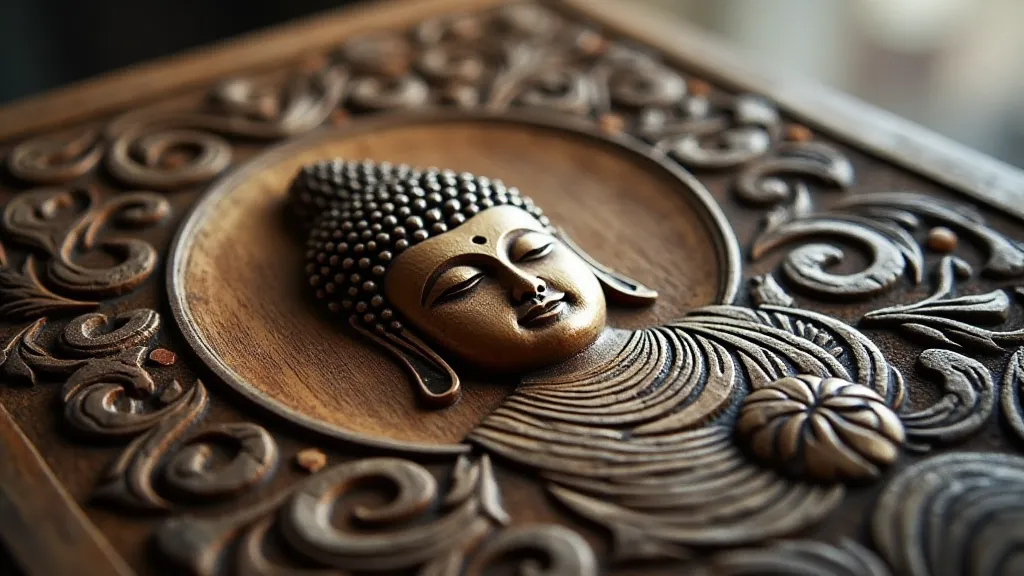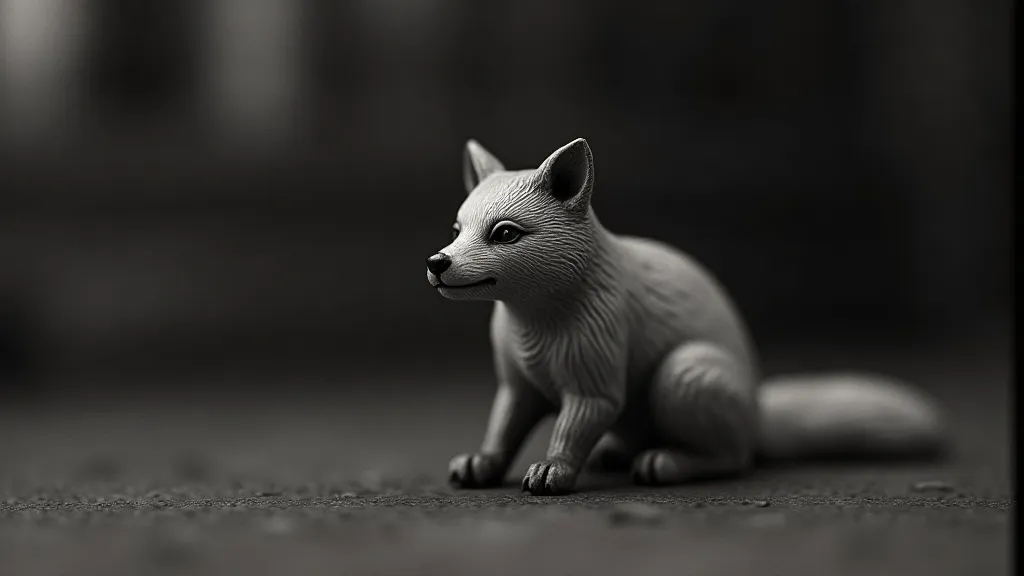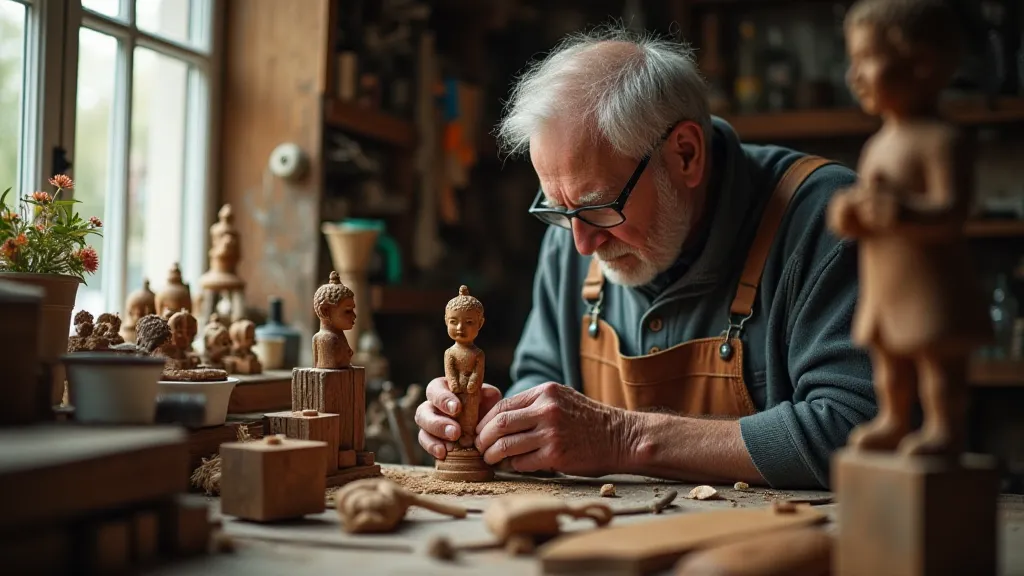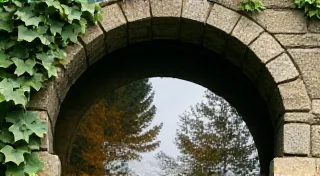Beyond Function: Wood Carving as a Form of Spiritual Expression
Wood carving. The very phrase evokes images of intricate detail, calloused hands, and the scent of freshly cut timber. But to reduce it merely to a craft is to miss a profound truth. Throughout history and across cultures, wood carving hasn’t been just about creating useful objects. It’s been a powerful form of spiritual expression, a tangible manifestation of beliefs, rituals, and deeply personal experiences.
I remember the first time I truly understood this. I was in a small, dusty shop in Romania, tucked away from the bustling streets of Bucharest. The owner, a weathered man named Ion, was a master wood carver, continuing a family tradition stretching back centuries. Surrounded by his creations – ornate icons, intricately carved furniture, and whimsical folk figures – I felt an almost palpable sense of history and devotion. He didn't speak much English, and my Romanian was even worse, but he didn’t need words. His hands, moving with practiced grace, told a story of faith and dedication that transcended language.
The Sacred and the Symbolic: Global Traditions
The link between wood carving and spirituality is as old as wood itself. Consider the Maori of New Zealand, whose intricate carvings on meeting houses (wharenui) are not merely decorative; they are visual representations of genealogy, mythology, and the spirit world. Each curve, each line, carries deep symbolic meaning, intended to connect the community with their ancestors and the divine. The figures carved, often depicting ancestors or mythological beings, aren’t simply representations; they are conduits to the spiritual realm.
Similarly, in Tibetan Buddhism, wood carving plays a vital role in creating *t’hangkas* – religious paintings depicting deities and mandalas. These are not painted; the intricate details are carved into wood blocks, which are then used to print the images. The process itself is imbued with reverence, and the resulting images are considered sacred objects, used in meditation and rituals.

Moving to the Americas, we find similar expressions. Native American tribes across the continent have utilized wood carving for centuries to create masks, ceremonial objects, and totem poles. These aren't simply artistic endeavors; they are integral parts of spiritual practices, used to invoke spirits, tell stories, and honor ancestors. The intricate designs often incorporate symbolic animals and figures, each representing specific qualities or powers.
In Africa, particularly in regions like Ghana and Nigeria, wood carving has a long and rich tradition, often intertwined with animistic beliefs. Sculptures are created to represent spirits, ancestors, and deities, serving as focal points for rituals and ceremonies. The artistry is often characterized by a sense of dynamism and movement, reflecting the vitality of the natural world and the power of the spiritual forces that govern it.
Regional Variations: Echoes of Belief
The beauty of this tradition lies in its incredible diversity. Regional carving styles aren’t simply aesthetic choices; they are reflections of the unique spiritual landscape of each community. Consider the Baroque wood carving traditions of Tyrol, Austria. These elaborate altarpieces and religious sculptures, often featuring incredibly detailed figures and dramatic lighting, were meant to inspire awe and reverence. The focus wasn't just on depicting biblical scenes; it was about conveying the emotional intensity of those events and drawing the viewer closer to the divine.
Contrast that with the simpler, more stylized carvings of the Amish communities in North America. These carvings, often depicting animals, biblical scenes, or everyday objects, reflect a more restrained and practical approach to faith. While lacking the overt drama of the Tyrolean Baroque, they possess a quiet dignity and a profound sense of connection to the natural world and the simple truths of faith.
In Japan, *Netsuke*, small, intricately carved figurines traditionally used to secure pouches to clothing, evolved from utilitarian objects to miniature works of art. The subjects are diverse – animals, mythical creatures, human figures – but each carving is imbued with a sense of quiet contemplation and a deep appreciation for the beauty of the natural world. These aren’t just pretty objects; they've been cherished as talismans, imbued with protective qualities.

The Hand of the Carver: A Bridge Between Worlds
What's truly remarkable about these diverse carving traditions is the profound connection between the carver and the spiritual realm. For many, the act of carving isn’t just a craft; it’s a form of prayer, a meditative practice that allows them to connect with something larger than themselves. The rhythmic tapping of the chisel, the feel of the wood grain beneath their fingers – these become conduits to a deeper understanding of the world and their place within it.
I remember Ion, the Romanian wood carver, explaining that he didn't *create* his carvings; he *revealed* them. He felt as though the forms were already present within the wood, waiting to be liberated. His role, he believed, was simply to listen to the wood and allow it to guide his hand. This perspective, while perhaps bordering on the mystical, speaks to a profound respect for the material and a deep sense of humility before the creative process.
Preserving the Legacy: Restoration and Appreciation
Today, these traditions face numerous challenges – globalization, modernization, and the loss of traditional knowledge. Restoring antique carvings isn’t just about preserving beautiful objects; it’s about safeguarding a vital link to our cultural and spiritual heritage. A skilled restorer doesn’t simply repair damage; they strive to understand the original context, the techniques used, and the spiritual significance of the carving.
For collectors, the appreciation goes beyond the aesthetic value. Recognizing the historical and spiritual significance of these carvings fosters a deeper connection to the cultures and communities that created them. It's about appreciating the hands that shaped these objects, the beliefs that inspired them, and the stories they tell.

Wood carving, in its myriad forms, is a testament to the enduring power of the human spirit and the profound connection between art, faith, and community. It serves as a constant reminder that beyond the purely functional, lies a deeper meaning—a yearning to understand the mysteries of existence and to express them in tangible, enduring forms.





